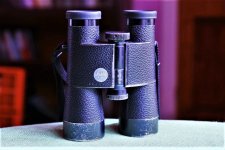As someone who has been considering buying the new 7x35 Trinovid, I’m now backing away for the most part.
The only thing that makes sense for Leica not bringing the water resistance of theses bins up to a par with even the least expensive bins available today, must be cost.
A little machining for O-rings, better gaskets at the front and rear lenses, sealant at the body joints. They’ve already improved most everything else, why stop at waterproofing? The “tradition” argument isn’t working for me, they have twist up eyecups and that has already changed their form slightly. Making them more water tight won’t change their form.
As someone has pointed out, and I’m paraphrasing, this isn’t Louis Vuitton luggage. These are tools. Form must follow function. It’s also somewhat un-German like, if I may say.
About those anecdotes of past wet adventures with Leitz Trinovids, not enough for me. Don’t get me wrong, I believe them. I had 10x25 Leitz w/o problems and knew a few people with Leitz Trins and they had no problems. But I also know what Leica wrote me and I recently went through a minor skirmish with Leica over a warranty issue, finally prevailing. I like to rinse my bins under a faucet after being in dusty or salty enviroments. Leica says no. If one were to get water damage, I wish them luck with Leica.
There is, in addition to the water question, the idea of them losing their dry internal environment (nitrogen) muck quicker than other modern bins due to their lack of sealing.
I don’t write any of this attempting to persuade or dissuade anyone interested in these from buying or not. I think the 7x35s, in particular, look like they’ll be a great binocular. I just want something I can use like any of my other Leicas I’ve had. Though my first Leica product were the already mentioned Leitz minis, I bought my first Leica Trins in 1992. They were a sea change. The first modern binoculars and the template for everything that has followed, regardless of manufacturer. I’ve owned 3 Trinoids and 3 Ultravids since. All were fine instruments and I used them without special treatment. I wanted these “new” Leitz remakes to be like that.





